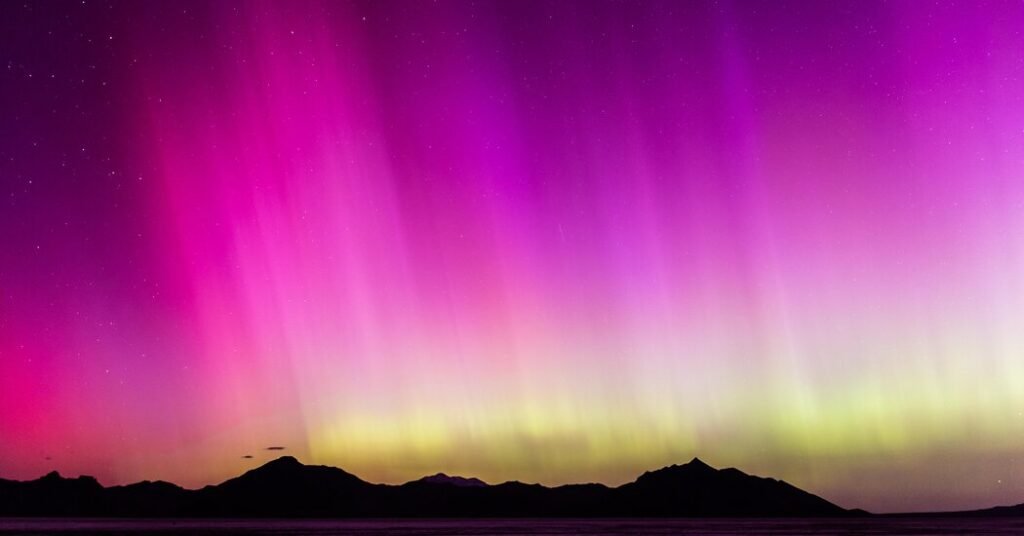The spectacular aurora borealis, also known as the northern lights, has been unusually prevalent since Friday due to a powerful geomagnetic storm. This stunning nighttime light display triggered by solar flares has been observed from locations much farther south than usual, including the United States, England, and parts of Central America. The glowing green, pink, and purple lights are expected to be visible again on Sunday night in places with clear, dark skies, according to the National Oceanic and Atmospheric Administration’s Space Weather Prediction Center. Mike Bettwy, the operations chief of the center, mentioned that the intensity of the storm on Sunday night could be comparable to what was seen on Friday.
Reports of the northern lights being visible in Puerto Rico, South Florida, and parts of Central America on Friday night have sparked excitement, with the possibility of a repeat on Sunday night if the storm remains intense. However, predicting the best time to view the aurora can be challenging as it tends to ebb and flow without much reason. Generally, the darker the sky, the higher the chances of seeing the aurora. Cloudy weather could obstruct the view, particularly in the central United States where rain and storms are forecasted.
Meteorologist Tony Fracasso at the National Weather Service’s Weather Prediction Center has mentioned that the best chances for clear skies are in much of the West, from Ohio toward the Mid-Atlantic, and possibly in North Dakota and Minnesota. However, New England’s chances of clear skies are uncertain. In the United Kingdom, thunderstorms were moving north across Wales into northern England and Scotland on Sunday night. But clearer skies were expected in the south and east, providing potential viewing opportunities for people in the region.
For those in clear areas, capturing the aurora borealis on camera or video with a cellphone is advised. The camera’s sensor is more sensitive to the wavelengths produced by the aurora and may capture a different image compared to what the naked eye sees. This weekend’s stunning display of the northern lights is a result of the most powerful geomagnetic storm to hit Earth since October 2003. Geomagnetic storms can cause brighter and more active auroras that expand to regions where they are not usually seen. The Space Weather Prediction Center has a five-level scale to rate geomagnetic storms, with a watch in place on Sunday for conditions to reach the fourth level or higher.
As of Sunday morning, there were no significant impacts from the storm reported by the Federal Emergency Management Agency, despite the potential for geomagnetic storms to interfere with power grids, communications, and navigation systems. The storm is expected to continue into Monday, according to the Space Weather Prediction Center. The extraordinary display of the aurora borealis over the weekend has captivated viewers across the United States, England, and parts of Central America, providing a rare opportunity to witness this natural phenomenon from unusual locations.








